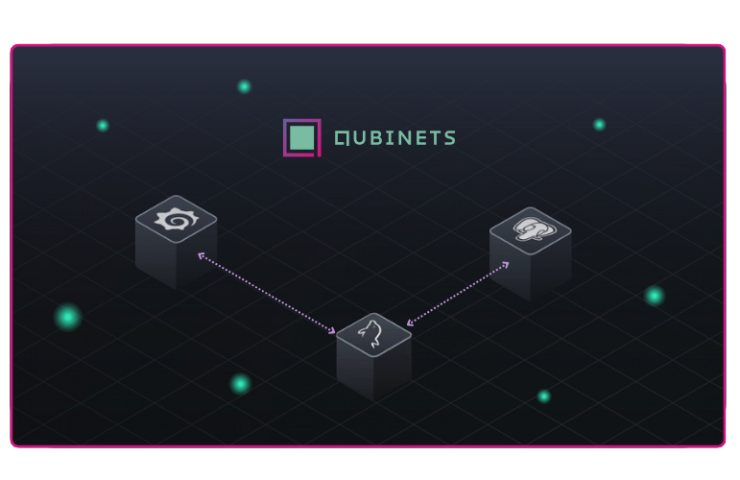Developing conversational AI with Rasa is a game-changer for technical teams looking to build custom chatbots or virtual assistants. Whether you’re building an assistant for customer support, internal operations, or sales, Rasa’s flexibility and open-source basis make it a go-to framework for developers. Add Qubinets to the equation, and you get streamlined deployment, seamless scalability, and easy integration with essential tools—all without drowning in DevOps complexity.
Let’s take a closer look at what Rasa brings to the table and how Qubinets can enhance its deployment and management.
Why Choose Rasa for Conversational AI?
Rasa is built for developers who need full control over their conversational AI. It’s not a plug-and-play solution, but that’s the beauty of it: you can design exactly what your use case demands. Here’s what makes Rasa stand out:
1. NLU That Gets You
At the heart of Rasa is its Natural Language Understanding (NLU) module. It does the heavy lifting for processing and interpreting user inputs:
– Intent Recognition: Understands what the user wants (e.g., “I need to track my shipment”).
– Entity Extraction: Captures critical data like tracking numbers, dates, or product IDs directly from the user message.
2. Dialogue Management Done Right
Rasa’s dialogue management capabilities let you design AI agents that can handle complex, multi-turn conversations. It uses:
– Machine Learning Policies: These guide the agent’s decision-making based on context and user input.
– Flexible Stories: Create training data that shows how your bot should respond to different situations.
3. Custom Actions for Dynamic Responses
Not every user request is static. For example, with Rasa, you can build custom Python actions to:
– Fetch data from APIs or databases.
– Perform on-the-fly calculations.
– Generate responses tailored to real-time data.
4. Deploy Everywhere
Rasa supports integrations with popular platforms like Slack, WhatsApp, Telegram, and more. You can even extend it to voice interfaces for a fully multimodal experience.
5. Open Source, Full Control
Rasa’s open-source nature means no vendor lock-in, and you get complete visibility into how everything works. It’s a dream for teams that prioritize customization and privacy.
Key Use Cases for Rasa
1. Automating Customer Service
Customer service bots powered by Rasa can handle routine queries like “Where is my order?” or “How do I reset my password?” They’re designed to reduce the load on human agents, allowing teams to focus on more complex tasks. ERGO, a major insurance provider in Europe, uses Rasa to offer 24/7 support, cutting response times significantly.
2. Enhancing Internal Operations
Internal workflows like IT helpdesk support or HR assistance often involve repetitive tasks. Rasa bots can step in to resolve common issues like “How do I access the VPN?” or “What’s my remaining leave balance?” This not only saves time but also enhances employee satisfaction. Lemonade, a US-based tech company, successfully used Rasa to build internal assistants that automate these processes seamlessly.
3. Lead Generation and Sales
Rasa isn’t just for customer support—it’s a powerful tool for sales too. By engaging potential customers through personalized conversations, Rasa bots can qualify leads, recommend products, and even close sales. Helvetia’s Rasa-based chatbot, for instance, achieved a conversion rate boost of 30% by guiding prospects through the purchasing journey over text.
4. Voice Assistants
Voice-enabled Rasa bots are making waves in industries like telecom and banking. By integrating with IVR systems, these assistants handle natural language queries like “Check my account balance” or “Activate a new SIM card.” This adds a human touch to automated interactions, improving user experience significantly.
5. Multi-Language Support
One of Rasa’s standout features is its ability to support multiple languages. Businesses operating globally can deploy bots that cater to diverse customer bases, offering localized support in English, Spanish, German, and more. This flexibility is crucial for maintaining consistent user experiences across regions.
6. E-Commerce Assistance
In the e-commerce space, Rasa bots enhance customer journeys by offering product recommendations, handling order tracking, and assisting with returns. For example, an online retailer could deploy a Rasa assistant to guide users through selecting the perfect product based on their preferences.
Rasa + Qubinets
While Rasa excels at conversational AI, setting up the backend can be challenging. This is where Qubinets steps in, making deployment and scaling straightforward for technical teams. Here’s how:
1. Streamlined Deployment
With Qubinets, you can deploy Rasa on your preferred cloud or private infrastructure in minutes. Our drag-and-drop UI handles the heavy lifting—no need to spend hours wrestling with Kubernetes configs.
2. Privacy Without Compromise
All your Rasa deployments stay within your infrastructure, ensuring compliance with strict privacy requirements. Your data isn’t shared with third parties, period.
3. Integrations Out of the Box
Qubinets connects Rasa with essential tools effortlessly:
– PostgreSQL: Store conversation histories for better analytics.
– Grafana: Visualize key metrics like user interactions or error rates.
– Kafka: Manage event streaming for real-time workflows.
4. Effortless Scalability
Built on Kubernetes, Qubinets ensures your Rasa deployment scales automatically based on demand. Whether you’re handling hundreds or thousands of users, the infrastructure adapts in real-time.
Real-World Integration Example
Let’s walk through a typical setup:
1. Build Your Assistant: Train your Rasa model to handle FAQs and connect to a CRM for personalized responses.
2. Deploy with Qubinets: Use Qubinets to provision the backend infrastructure. Deploy your Rasa bot on your chosen cloud in a few clicks.
3. Add Monitoring: Set up Grafana through Qubinets to track conversation performance and identify areas for improvement.
4. Scale Automatically: Rasa and Qubinets handle traffic spikes seamlessly, so you’re always prepared.
The Bottom Line
Rasa provides the tools to build intelligent, customizable AI assistants. Qubinets takes that foundation and makes deployment, integration, and scaling as straightforward as possible. Together, we’re a natural fit for developers who want control over their conversational AI without the headache of managing complex infrastructure.
If you’re ready to focus on building great bots instead of battling backend setups, Rasa and Qubinets are here to help. Start building smarter, faster, and with complete control as of today. Start from here





